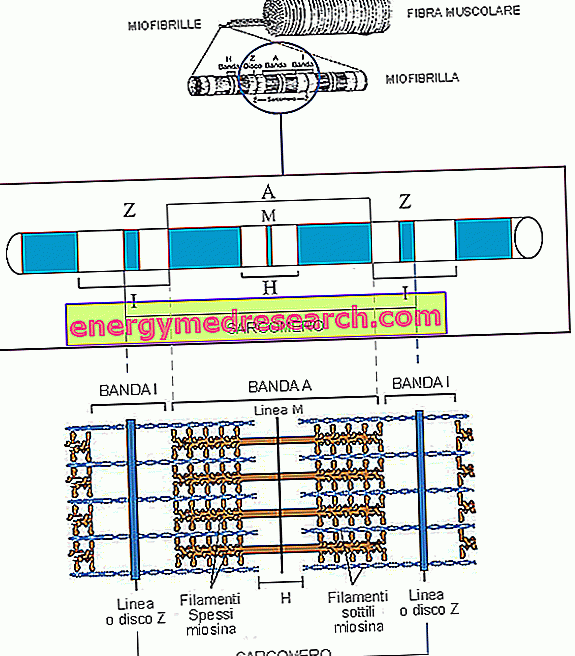Generality
Painkillers (or analgesics) - as can be seen from their name - are drugs used to treat pain of different nature and entity.
Although effective in "extinguishing" pain, these drugs generally do not resolve the cause that led to the onset of the painful stimulus.
The following classes of drugs belong to the group of painkillers:
- NSAIDs (non-steroidal anti-inflammatory drugs);
- Analgesic-antipyretics;
- Opioid analgesics.

NSAIDs
Non-Steroidal Anti-Inflammatory Drugs (NSAIDs) constitute a fairly broad category of drugs.
The active ingredients belonging to this class are endowed - in a more or less accentuated manner - with anti-inflammatory, pain-relieving and antipyretic properties.
Only a few of the main features of NSAIDs will be briefly described below. For more detailed information, see the dedicated articles already on this site ("NSAIDs: History, Mechanism of Action, Indications", "NSAIDs: Classification based on chemical structure", "NSAIDs: Side Effects and Contraindications").
NSAIDs can be classified according to their chemical structure and according to their mechanism of action.
Among the most known and used NSAIDs we find:
- Salicylates, including acetylsalicylic acid;
- Propionic acid derivatives, such as ibuprofen, naproxen, ketoprofen, dexketoprofen and flurbiprofen;
- Acetic acid derivatives, including ketorolac, diclofenac and indomethacin;
- Sulphonyls, among which we find nimesulide;
- Derivatives of enolic acid, among which we find piroxicam, meloxicam, tenoxicam and lornoxicam;
- Derivatives of phenamic acid, among which we find mefenamic acid and flufenamic acid;
- Selective COX-2 inhibitors, including celecoxib and etoricoxib.
Mechanism of action of NSAIDs
NSAIDs perform their anti-inflammatory, antipyretic and above all analgesic action by inhibiting cyclooxygenase.
Cyclooxygenase is an enzyme of which three different isoforms are known: COX-1, COX-2 and COX-3.
These enzymes convert arachidonic acid present in our body into prostaglandins, prostacyclines and thromboxanes.
Prostaglandins - and especially prostaglandins G2 and H2 - are involved in inflammatory processes and mediate pain responses. While type E prostaglandins (PGE) induce fever.
COX-1 is a constitutive isoform, normally present in cells and involved in the mechanisms of cellular homeostasis. COX-2, on the other hand, is an inducible isoform that is produced by activated inflammatory cells (inflammatory cytokines).
Through the inhibition of COX-2, therefore, the formation of prostaglandins responsible for the onset of fever, inflammation and pain is hindered.
However, many NSAIDs (except for selective COX-2 inhibitors) are also able to inhibit the constitutive isoform COX-1. This inhibition is at the origin of some of the side effects typical of non-selective NSAIDs.
Side effects
Of course, the side effects vary depending on the active ingredient you use, but some side effects are common to the entire class of drugs.
Among the adverse effects common to all NSAIDs are those of the gastrointestinal type, such as:
- Nausea;
- He retched;
- Diarrhea or constipation;
- Gastrointestinal ulceration, perforation and / or bleeding.
Furthermore, the use of NSAIDs at high doses and for long periods of time can cause an increased risk of myocardial infarction or stroke.
Analgesics-antipyretics
This class includes drugs that induce antipyretic and pain-relieving effects, but do not have anti-inflammatory activity.
In fact, the only active ingredient still on the market belonging to this class of drugs is paracetamol .
The mechanism of action with which this drug carries out its activity, however, has not yet been fully clarified.
The most accepted hypothesis is that according to which paracetamol exerts its antipyretic and pain-relieving action by inhibiting one of the isoforms of the cyclooxygenase enzyme: COX-3.
Opioid analgesics
All drugs that produce analgesia due to stimulation of endogenous opioid receptors belong to this class of painkillers.
Also in this case, below, only some of the characteristics of this class of drugs will be briefly illustrated; for more detailed information, see the dedicated article on this site ("Opioid drugs").
Among the most popular opioid painkillers we mention morphine, codeine (also used for its antitussive properties), fentanyl (or fentanyl, or fentanyl), methadone, oxycodone and buprenorphine .
Mechanism of action of opioid analgesics
As mentioned, painkillers belonging to this class of drugs exert their action by stimulating endogenous opioid receptors.
There are several types of opioid receptors:
- Receptor μ (also known as MOP);
- Δ receptor (also known as DOP);
- Κ receptor (also known as KOP);
- Orphan receptor (otherwise known as NOP).
These receptors are located along the pain pathways of our body and are involved in neurotransmission of painful stimuli. More in detail, their stimulation causes the activation of a cascade of chemical signals that culminates with the induction of an analgesic effect.
Most opioid analgesics used in therapy are agonists (partial or total, selective or not) of μ receptors. Therefore, the mechanism of action of these drugs consists in stimulating the aforementioned receptors, thus inducing analgesia.
Side effects
The typical side effects of opioid painkillers are:
- Sedation and drowsiness;
- Miosis (ie narrowing of the pupil);
- He retched.
Furthermore, at high doses, these drugs can cause respiratory depression and confusion.
Finally, opioid painkillers can be addictive.



